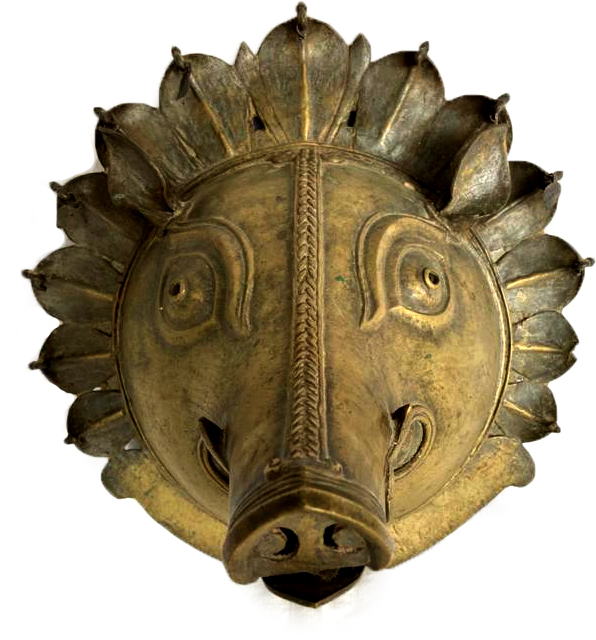
Varaha Mask, Bronze, 11 x 11 x 9 inches
Bhuta Mask
Bhuta in Sanskrit means spirit. Set in an ancient, pre-Hindu folk tradition, Bhuta masks are used for worship in the Tulu Nadu region of Karnataka. It involves a religious ceremony called bhuta kola, where an oracle or a priest channels the invoked spirit via performance, who then interacts with its audience by answering questions or solving quarrels. A similar custom called, Theyyam, is practised in the North Malabar region of Kerala where ritual objects, metals masks and ornaments are placed in a sthana after the ceremony and offerings are made. The masks are usually carved in wood or sculpted in bronze. The bhuta representation is primarily in totemic forms of Panjurli (pig or boar), Pilichamundi (tiger), Nandikona (bull) bhutas, or portrayals acquired from the Hindu pantheon, like, Shiva’s attendants or ganas and Maisandaya, a deity in the form of a bull, worshipped by agrarian communities. Bhuta ceremonies vary across regions and involve a highly charged atmosphere where ancient narrative legends or Paadannas are recited by a woman of the community. Thick metal alloys of the masks make them resistant to the elements of fire, water and air. This ritual is believed to provide protection against invaders and robbers, elements of fire, storms, flooding, drought, disease and to assure the fertility of the soil, livestock and human experience.

